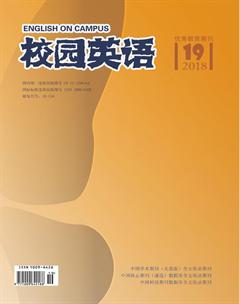Application of Task-based Language Teaching to English Extensive Reading
史琪
【Abstract 】As a basic course for college English major students, the English extensive reading course undertakes many important assignments. However, nowadays, there exist some problems in the English extensive reading class. In order to bring students active participation into full play, the task-based language teaching approach is adopted to the English extensive reading course. This paper will discuss the definition of tasks and TBLT and a syllabus based on TBLT is offered to better display the teaching process.
【Key words】Task-based Language Teaching; English extensive reading; syllabus
1. Introduction
Definition of tasks and TBLT
Task-based Language Teaching is an approach that students reach the learning goals in the process of fulfilling a series of tasks. TBLT advocates that the notion “task” is a central unit of planning and teaching. Many scholars have defined it as follows:
Crookes defines a task as “a piece of work or an activity, usually with a specified objective, undertaken as part of an educational course, at work, or used to elicit data for research.” (Crookes, 1986).
According to Richards and Rodgers, task-based language teaching (TBLT) refers to the use of tasks as the core unit of planning and instruction in language teaching. (Richards & Rodgers, 2001). It is an approach that students are given many functional tasks which mainly focus on the meaning exchange and the use of language in the real-world. (Van den Branden, 2006).
2. A Syllabus based on Task-based Language Teaching
Course objectives:
This course is designed to help students master many kinds of useful reading skills. Besides, students are supposed to learn independently, promote their communicative ability after the large amount of input on different topics, and expand their horizon.
Teaching materials:
Textbook: 王守仁, & 趙文书. (1996). 新编英语泛读教程, (第1册). 上海外语教育出版社.
Handouts, Group PowerPoint and Multiple Media
Implementation:
This course is designed for undergraduates in the sophomore year in college majoring in English. Each class is composed of three different parts, which include pre-reading part, while-reading part, and post-reading part.
In order to demonstrate the detailed teaching procedure, we set the passage “Culture Shock: Making a cultural change” in English Extensive Reading textbook as an example to clarify the procedure clearly.
Pre-reading part (20minutes)
Teacher triggering part:
The teacher presents a picture with some people from different countries in the PowerPoint and raises some warming-up questions.
Students answering part: Some students share their personal experiences and understanding on this issue.
Teachers supplement part: The teacher explains the definition of “culture” and “culture shock” with some examples.
Task-given part:
Students are required to guess the word meaning in the word pretest, summarize the main idea of this passage, figure out what are the four distinctive phases of “culture shock” in the passage, the organization pattern of paragraph 1, the topic and main idea of paragraph 5.
While-reading part (40 minutes)
Students individual reading
Students discussion part
Teachers aid part
Students answering part
Students comment part: Other groups can compare findings, comment or add extra points.
Teachers assessment part:
The teacher evaluates the tasks done by students in task-given part.
3. Conclusion
The application of task-based language teaching to English extensive reading is beneficial to students. Students promote reading ability and communicative ability by accomplishing various tasks. Although there exist many challenges, there is no doubt that TBLT is an effective and useful teaching approach. Educators and teachers should spare no efforts to make innovations in teaching so that students can learn the most from the class.
References:
[1]Branden,K.V.D.(2006). Task-based language education: from theory to practice. Cambridge University Press.

